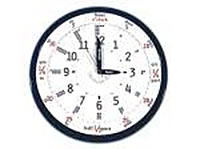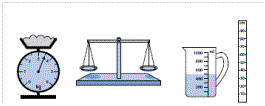Teachers should use every relevant subject to develop pupils’ mathematical fluency. Confidence in numeracy and other mathematical skills is a precondition of success across the national curriculum.
Teachers should develop pupils’ numeracy and mathematical reasoning in all subjects so that they understand and appreciate the importance of mathematics.
– National Curriculum in England Framework Document, September 2013, p10
Connections within Mathematics
Making connections to other topics within this year group
Number and place value
Pupils should be taught to:
- count in steps of 2, 3, and 5 from 0, and in tens from any number, forward and backward
- recognise the place value of each digit in a two-digit number (tens, ones)
- identify, represent and estimate numbers using different representations, including the number line
- compare and order numbers from 0 up to 100; use <, > and = signs
- read and write numbers to at least 100 in numerals and in words
- use place value and number facts to solve problems.
Making connections to this topic in adjacent year groups
Year 1
- compare, describe and solve practical problems for:
- lengths and heights (e.g. long/short, longer/shorter, tall/short, double/half)
- mass or weight (e.g. heavy/light, heavier than, lighter than)
- capacity/volume (full/empty, more than, less than, quarter)
- time (quicker, slower, earlier, later)
- measure and begin to record the following:
- lengths and heights
- mass/weight
- capacity and volume
- time (hours, minutes, seconds)
- recognise and know the value of different denominations of coins and notes
- sequence events in chronological order using language such as: before and after, next, first, today, yesterday, tomorrow, morning, afternoon and evening
- recognise and use language relating to dates, including days of the week, weeks, months and years
- tell the time to the hour and half past the hour and draw the hands on a clock face to show these times.
Non-statutory guidance
The pairs of terms: mass and weight, volume and capacity, are used interchangeably at this stage.
Pupils move from using and comparing different types of quantities and measures using non-standard units, including discrete (e.g. counting) and continuous (e.g. liquid) measurement, to using manageable common standard units.
In order to become familiar with standard measures, pupils begin to use measuring tools such as a ruler, weighing scales and containers.
Pupils use the language of time, including telling the time throughout the day, first using o’clock and then half past.
Year 3
- measure, compare, add and subtract: lengths (m/cm/mm); mass (kg/g); volume/capacity (l/ml)
- measure the perimeter of simple 2-D shapes
- add and subtract amounts of money to give change, using both £ and p in practical contexts
- tell and write the time from an analogue clock, including using Roman numerals from I to XII, and 12-hour and 24-hour clocks
- estimate and read time with increasing accuracy to the nearest minute; record and compare time in terms of seconds, minutes, hours and o’clock; use vocabulary such as a.m./p.m., morning, afternoon, noon and midnight
- know the number of seconds in a minute and the number of days in each month, year and leap year
- compare durations of events, for example to calculate the time taken by particular events or tasks.
Non statutory guidance
Pupils continue to measure using the appropriate tools and units, progressing to using a wider range of measures, including comparing and using mixed units (e.g. 1 kg and 200g) and simple equivalents of mixed units (e.g. 5m = 500cm).
The comparison of measures should also include simple scaling by integers (e.g. a given quantity or measure is twice as long or five times as high) and this should connect to multiplication.
Pupils continue to become fluent in recognising the value of coins, by adding and subtracting amounts, including mixed units, and giving change using manageable amounts. They record £ and p separately. The decimal recording of money is introduced formally in year 4.
Pupils use both analogue and digital 12-hour clocks and record their times. In this way they become fluent in and prepared for using digital 24-hour clocks in year 4.
Cross-curricular and real life connections
Learners will encounter measurement in various ways in everyday life. Time, money, temperature, weighing ingredients are just some of them.
Time is a sequence of events that relates to our daily life. Clocks/watches and calendars are tools that measure time.
We use money to buy the things we need. Using money involves using different mathematics skills like counting, adding, and subtracting amounts of money.
Measurement skills are extensively used in every kitchen, every recipe. In school, opportunities arise in other subjects such as science – measuring plant growth and monitoring and recording temperatures, or P.E. – measuring long jumps, counting skips, timing races etc.
Take cross-curricular opportunities to deepen children’s understanding of units of measurement. For example, ask them to:
- find out what measures their parents use in their jobs or in the home;
- take measurements of jumps or throws in PE lessons;
- use measures in art, design and technology lessons, discussing degrees of accuracy.









